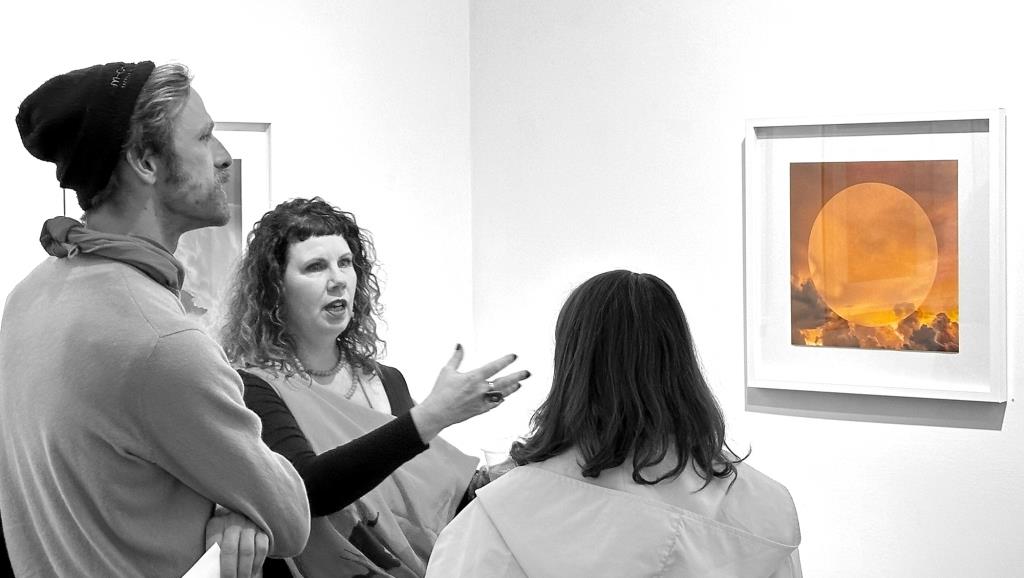Morgan Williams
One thing I love about hanging out in a gallery all day is the conversations I overhear. The responses to art are as many and varied as the artworks themselves. Here’s some of the most common things I’ve heard while people traverse our gallery space and my thoughts or responses.
“A 3-year old could do that!”
This is possibly true and probably the most common comment I hear, usually about abstract or naïve art. I understand the sentiment. People want artists to create something unattainable – a creation they could never achieve themselves. Just like dining out, they expect something they could never cook or paint. But could they paint or draw or sculpt the work? It takes courage to freely explore creativity. Overcoming fear and allowing a free flow is much harder than it seems. To then introduce structure and form and technique takes skill.
I have seen many adults freeze when asked to make a few lines on a page. Simply dribbling paint, scribbling, spattering or ‘making a mess’ can induce such resistance from the adult mind. Children don’t have these same fears. Many abstract or naïve artists spend a long time overcoming the internalised resistance of the education system and our society before they can freely express again. The main premise of most abstraction is to elicit an emotional response or trigger the imagination which it often does. Similarly naïve art explores inhibition and raw creativity which kids often have in abundance.
“I’d like it if they could put more blue in the sky. I’ve got bright blue cushions in my lounge.”
Home decorating is one big reason people purchase art. So much so that it has become the focal point for many artists to monetise their creativity. Ken Done was one of the first Australian artists to really hit the big time commercially and have his art replicated on doona covers, tea towels, t-shirts and jumpers back in the 80s. Now days it’s David Bromley who has his art on a range of crockery, homewares and even perfume. These fads come and go. Unfortunately for the artists involved they tend to get stuck replicating the same style over and over over and not extending the narrative of their art or pushing any boundaries for the art world. They do often end up fabulously wealthy which for some indicates success and means that the term “struggling artist” may not apply to them anymore.
“They want five grand for that?”
The price of art is often based on perceived value. By this I mean once we calculate the cost of materials and labour or time for the artist to produce the work, the rest is based on capitalist principles determined by supply and demand. With a finite output during their lifetime the art produced by any one artist is limited. This means supply is innately restricted and once they are popular, prices can start to climb rapidly. To overcome this issue, popular artists often employ assistants to help keep their output flowing as demand increases. Too much of the same thing though can have the opposite effect and reduce the value as a limited market becomes flooded. Art collectors also don’t like replicated art as the long-term value decreases if everyone has a similar artwork.
“That’s amazing. Do you think they would paint me a bigger one?”
Commissions are usually an artist’s dream. To be assured of a sale at the get-go is a wonderful feeling. Historically that’s how the art world operated for centuries. Most often portraits or a painting of the family mansion were the ultimate sign of success and status. Meticulous detail was the order of the day. Things only changed with the advent of photography when a portrait became accessible to the masses. These days photos are so commonplace that painted portraits have made a comeback with celebrities being the focal point of an entire show on the ABC by artist Ahn Do. Things are also spurred on by the ever-popular Archibald prize every year. There are dangers with commissions though. Will the buyer like the work? Will they want input and creative control? How many times does it get changed or altered? While these sorts of issues are commonplace for illustrators, artists like to maintain creative control over their work. Too much input from the customer and an artist is once again back to being a home decorator!
In summary art serves many different purposes to us all. For some it is all about narrative and meaning. For others it is visual aesthetic. Or perhaps it is to shock, provoke emotion and further a social or political cause. Unless these things change, the secret conversations I hear at Radius will remain as diverse and varied as the artworks themselves.
Morgan Williams is the co-director with Kim Percy of Radius Art Space. His art practice spans a 30 year period and explores a diverse range of mediums and topics.











